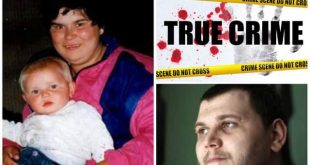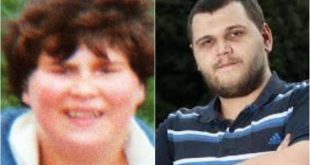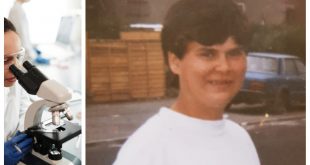There are a number of murders across South Yorkshire that for decades, and now even generations, remain unsolved.
Original Source: The Yorkshire Post By Emma Ryan
Monday, 2nd May 2022, 6:00 am
Two in particular trouble Dave Stopford, the Head of South Yorkshire Police’s Major Incident Review Team.
In May 1964, Anne Dunwell, aged 13, visited an aunt in the village of Bramley, and was on her way back to her home she shared with her grandparents in the nearby village of Whiston, between Sheffield and Rotherham. She had decided to keep her grandmother company, because her grandfather was working a night shift, but never caught the bus.
Her body was found in a hedge bottom and a post-mortem would later reveal Anne had been strangled with her own stockings and viciously sexually assaulted.
It is also coming up to the 25th anniversary of the murder of Patricia Grainger. The 25 year old mother of one was found dumped under a discarded bed base at a brook behind homes on Deerlands Avenue, Parson Cross, on August 10, 1997.
She lived on a street nearby and had not been seen for a number of days before her body was found by children playing. Pat was semi-naked and had been stabbed, strangled and sexually assaulted.
Despite the passage of time, they still bother Mr Stopford as much as the current cases he works on.
“The one that I have worked on for years is Pat Grainger. Daniel, her son was five at the time and he has campaigned all his life and I have met him many times.
“We are still doing work on that and I would love to solve that. It has been part of your life, I have been looking at it for so long with different technologies. If we could just get that home it would be so rewarding.”
There are two things that are likely to provide the answers now to something that has remained unresolved for years, says Mr Stopford – advances in technology and a crisis of conscience.
Appeals for cold cases are usually done on anniversaries, if there are new lines of enquiry and if detectives have almost cracked it but need just one last piece of the jigsaw.
“Most murders are reviewed over time and we just might not be there but where we might get a positive is DNA. It mirrors nationally that the best results are from DNA as opposed to witnesses or police work.
“DNA is so sensitive now. If you strangled someone 25 years ago they might have taken tapes from the body and looked for fibres or hair but now we are looking at those tapes as they might have picked up DNA.
“There are all sorts of things we have now that we didn’t have 30 or 40 years ago such as CCTV or phones. It can lead you in the right direction nowadays but you can’t rely on it for the older cases – there you are looking for eyewitnesses and forensics.
“We appeal for witnesses whose allegiances may have changed. We find they protect someone who committed an offence and wouldn’t speak to police out of loyalty but over the years they might have split up and changed their position on that.
“Some others have never come forward and say it has been playing on their mind. It might not lead to anything but it might do.”
Mr Stopford and his team split working days looking at sex offences, reviewing recent murders that have not turned up any suspects and pursuing the ones that have been on the books for years – even though they think they know who did it.
“It is a really good opportunity to bring people to justice who think they have got away with it for years. We have a couple going through court now.
“In most cases there are suspects, and they remain suspects, it is very rare we just don’t have a clue. There are some where we think we are almost there and some where we have half a dozen suspects. It is frustrating but right from my very early days of policing I learned about that – it is part of being a police officer.”
 Who Killed My Mum? Patricia (Pat) Grainger. Sheffield Hartley Brook Murder 10/08/1997 Appealing for information on the murder of my mum patricia grainger in sheffield on 10th august 1997
Who Killed My Mum? Patricia (Pat) Grainger. Sheffield Hartley Brook Murder 10/08/1997 Appealing for information on the murder of my mum patricia grainger in sheffield on 10th august 1997




